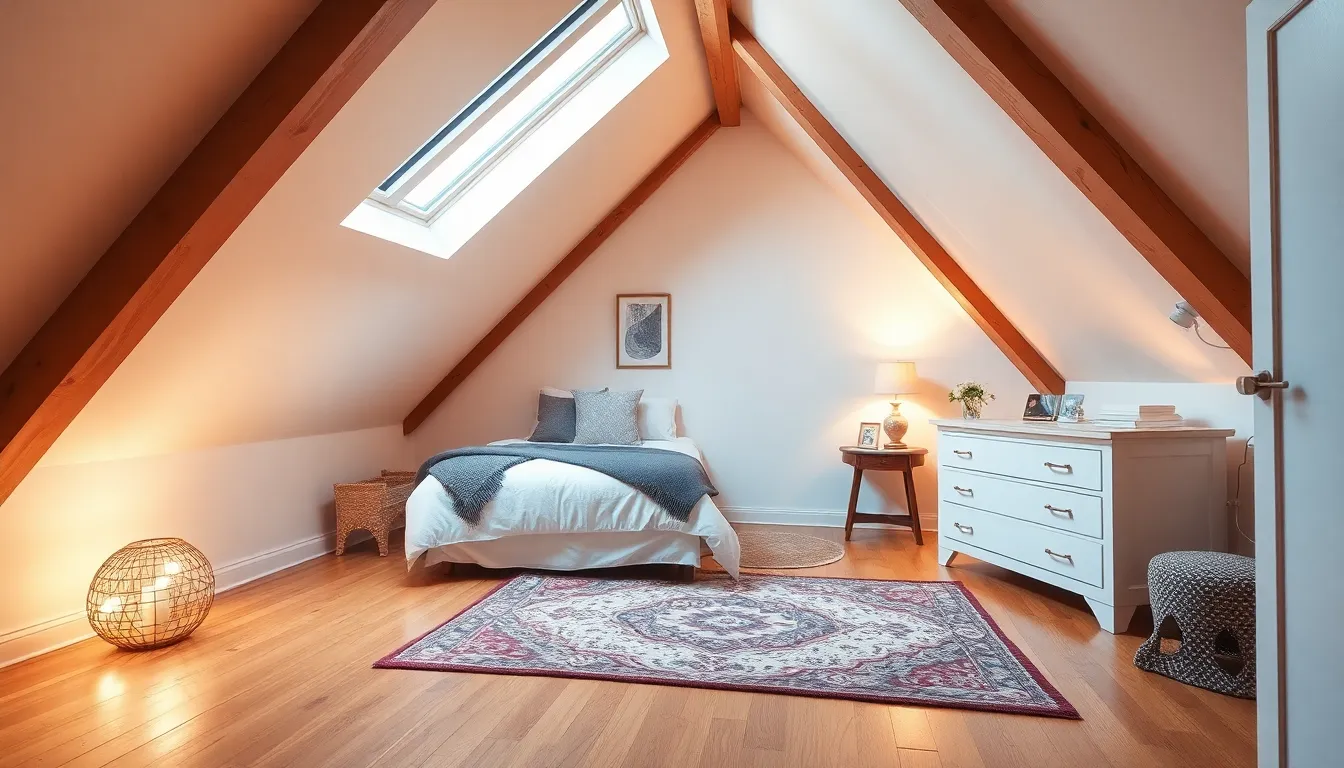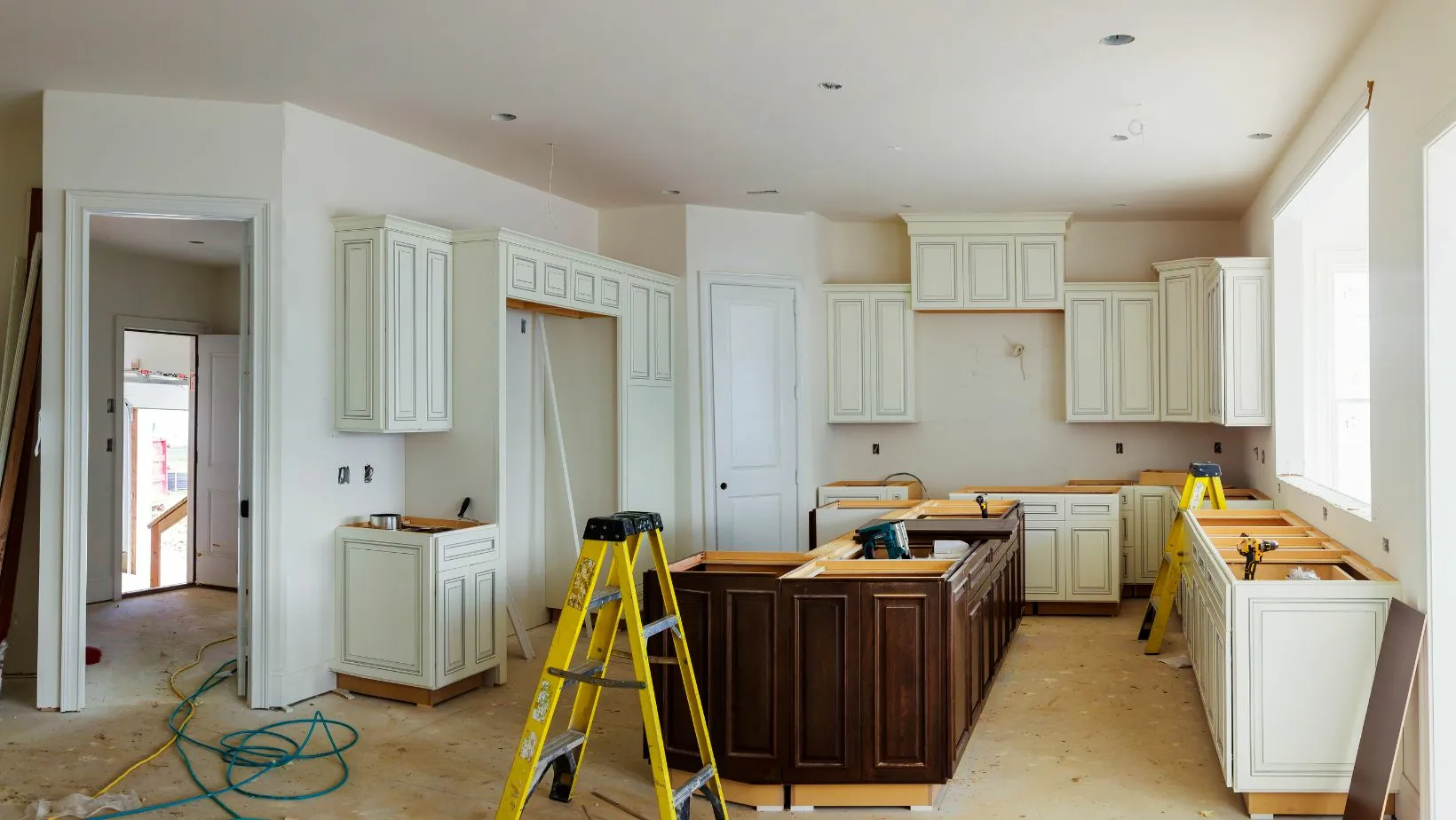Transforming an attic into a functional living space can breathe new life into a home. With the right vision and approach, an underutilized area can become a cozy bedroom, a vibrant playroom, or a serene office. Attic finishing not only enhances a home’s aesthetic appeal but also significantly increases its value.
Many homeowners overlook their attics, viewing them merely as storage spaces. However, with careful planning and execution, these hidden gems can provide additional square footage tailored to individual needs. From insulation and flooring to lighting and ventilation, every detail matters in creating a comfortable and inviting atmosphere. This article will explore essential tips and considerations for successfully finishing an attic, ensuring it’s both beautiful and functional.
Table of Contents
ToggleOverview of Attic Finishing
Attic finishing transforms unused space into functional living areas. Homeowners increasingly recognize attics as opportunities for improvement rather than mere storage. Finishing an attic adds usable square footage, enhances a home’s aesthetic appeal, and boosts property value.
Key elements in attic finishing include:
- Insulation: Ensures comfort and energy efficiency. Proper insulation prevents heat loss in winter and maintains coolness in summer.
- Flooring: A durable and visually appealing floor is essential. Options include hardwood, laminate, or carpet, depending on the intended use of the space.
- Lighting: Effective lighting enhances the atmosphere. Consider incorporating natural light through skylights and supplementing it with recessed lighting or wall sconces.
- Ventilation: Proper airflow prevents moisture buildup and promotes comfort. Installing vents or exhaust fans helps maintain a healthy environment.
Successful attic finishing requires thorough planning and consideration of structural aspects. Homeowners should consult building codes and possibly engage professionals to navigate renovations effectively. With intentional design, an attic can become a cozy retreat, a vibrant playroom, or a productive work area.
Benefits of Attic Finishing

Attic finishing offers numerous advantages for homeowners looking to maximize their property’s potential. Key benefits include increased living space and improved home value.
Increased Living Space
Attic finishing significantly enhances usable living space within a home. Homeowners can transform underutilized areas into functional rooms such as bedrooms, offices, or playrooms. This transformation allows families to accommodate changing needs over time, providing extra space without the complexity of a home addition. A finished attic can become a quiet retreat, a cozy guest room, or a vibrant play area, enhancing both comfort and lifestyle.
Improved Home Value
Attic finishing can lead to a substantial boost in a home’s market value. Real estate studies indicate that well-finished attics can yield a return on investment (ROI) of 70% or more, depending on design and materials used. Increased square footage contributes positively to property appraisals, making homes more attractive to potential buyers. Buyers often view finished attics as valuable, functional spaces, further increasing demand and, ultimately, sale prices.
Common Attic Finishing Techniques
Homeowners utilize various techniques for finishing an attic, each contributing significantly to comfort and functionality. Key methods include insulation options, drywall installation, and flooring choices, all of which enhance the living experience.
Insulation Options
Effective insulation is crucial for maintaining temperature control and energy efficiency in finished attics. Common insulation types include:
- Fiberglass Batts: Cost-effective and easy to install, providing good thermal insulation.
- Spray Foam Insulation: Offers superior thermal resistance and air sealing, reducing energy costs.
- Rigid Foam Board: Ideal for challenging spaces, providing high insulation values in thin profiles.
- Cellulose Insulation: Made from recycled paper, it’s eco-friendly and offers excellent soundproofing.
Selecting the right insulation depends on climate, budget, and attic layout.
Drywall Installation
Drywall installation plays a vital role in defining the aesthetic and functional aspects of an attic. Key considerations include:
- Type of Drywall: Standard, moisture-resistant, or fire-rated drywall can be chosen based on specific attic uses or local building codes.
- Framing Structure: Proper framing ensures secure attachment and can impact the overall durability.
- Finishing Techniques: Taping, mudding, and sanding create a smooth surface for painting or decoration.
Installing drywall correctly enhances the attic’s appearance while adhering to safety standards.
Flooring Choices
Choosing the right flooring significantly affects the attic’s usability and comfort level. Popular options consist of:
- Carpet: Provides warmth and comfort, useful for bedrooms or playrooms.
- Laminate Flooring: Offers durability and ease of installation, available in various styles.
- Vinyl Plank Flooring: Waterproof and resilient, suitable for multi-purpose spaces.
- Hardwood Flooring: Adds classic appeal but may require additional insulation underneath.
Each flooring option impacts the overall atmosphere and should align with the intended use of the attic.
Planning Your Attic Finishing Project
Planning a successful attic finishing project involves careful consideration of budget and design. Homeowners should approach these aspects strategically to maximize the attic space’s potential.
Budget Considerations
Budgeting for attic finishing requires a detailed understanding of potential costs. Homeowners should allocate funds for insulation, flooring materials, drywall, and lighting fixtures. Prioritizing essential elements, such as structural support and electrical work, can prevent expensive surprises later.
| Expense Category | Estimated Cost Range |
|---|---|
| Insulation | $0.50 – $2.00 per sq. ft. |
| Flooring | $1.50 – $10.00 per sq. ft. |
| Drywall | $0.80 – $2.00 per sq. ft. |
| Lighting Fixtures | $20 – $300 per fixture |
| Labor Costs | $40 – $100 per hour |
Consulting with professionals can provide accurate estimates for labor and material costs. Setting aside a contingency fund of 10% to 15% of the total budget can cover unexpected expenses that arise during renovations.
Design Ideas
Designing an attic space starts with determining its intended use. Homeowners can create unique spaces by considering layout, color schemes, and furniture styles. Popular design ideas include:
- Cozy Bedroom: Incorporate sloped ceilings with skylights and built-in storage to maximize space.
- Playroom: Use vibrant colors, durable flooring, and soft furnishings to create a fun and safe environment.
- Home Office: Design a quiet workspace with functional shelving, good lighting, and ergonomic furniture.
Storage solutions like built-in cabinets or under-the-eave shelves can enhance functionality without sacrificing style. Selecting light, neutral colors can brighten the space, making it feel larger and more inviting. Integrating design that reflects personal taste contributes to a cohesive aesthetic and enhances overall appeal.
Transforming an attic into a functional living space offers homeowners a unique opportunity to enhance their homes. With the right planning and attention to detail, these often-overlooked areas can become beautiful and practical rooms that cater to various needs.
Investing in quality insulation, flooring, and lighting not only improves comfort but also boosts property value significantly. By embracing creative design ideas and maximizing available space, homeowners can create inviting environments that reflect their personal style.
Ultimately, a well-finished attic serves as a testament to thoughtful home improvement, providing both immediate enjoyment and long-term benefits.







